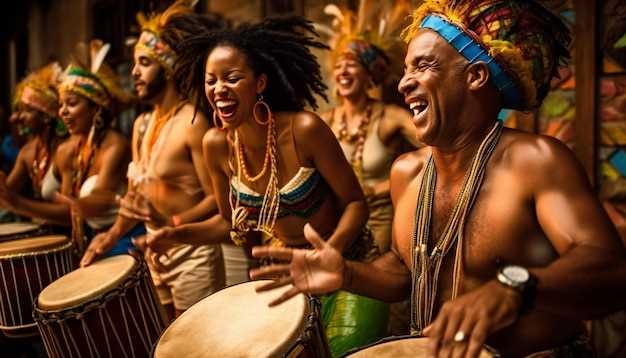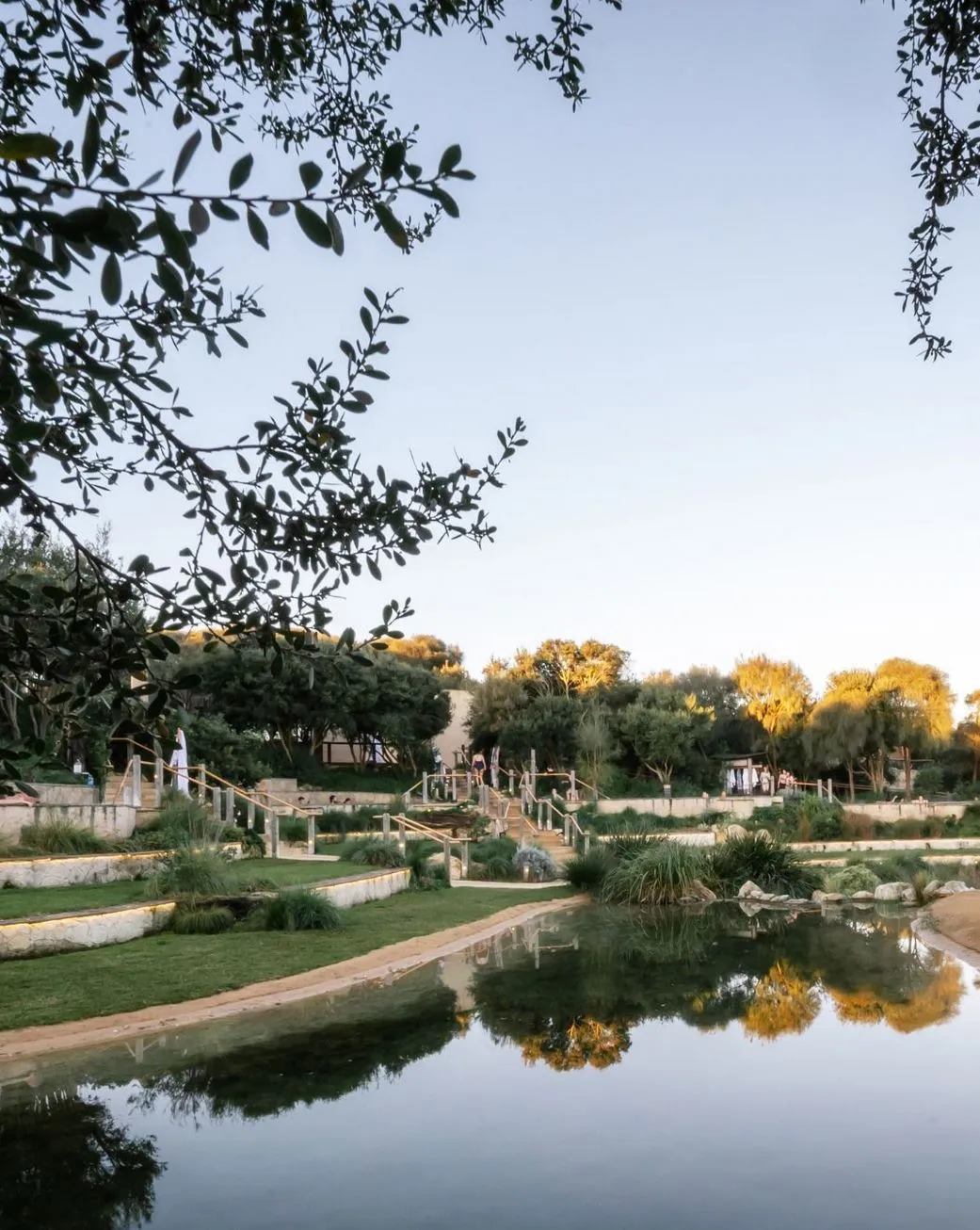
Immerse yourself in the captivating world of Haiti, a country brimming with an extraordinary tapestry of artistic expression, melodic rhythms, and captivating movements. This Caribbean nation boasts a cultural heritage that is as diverse as it is rich, offering a glimpse into a world where creativity knows no bounds.
Step into the realm of Haitian art, where vibrant colors and intricate details come together to tell stories of resilience, spirituality, and the beauty of everyday life. From the bold brushstrokes of renowned painters to the delicate craftsmanship of skilled artisans, the art scene in Haiti is a testament to the indomitable spirit of its people.
As you delve deeper into the cultural fabric of Haiti, the rhythmic beats of its music will envelop your senses, transporting you to a realm where melodies are infused with history, spirituality, and a zest for life. From the soul-stirring sounds of traditional folk music to the infectious rhythms of kompa, Haiti’s musical landscape is a testament to the country’s ability to find joy and solace in the face of adversity.
But the exploration of Haiti’s cultural heritage does not stop at art and music alone. Dance, with its fluid movements and expressive gestures, takes center stage, offering a window into the soul of the Haitian people. From the graceful elegance of the Haitian ballet to the energetic and vibrant movements of traditional folk dances, the world of Haitian dance is a celebration of life, community, and the power of self-expression.
Join us on a journey of discovery as we delve into the depths of Haiti’s cultural heritage, where art, music, and dance intertwine to create a vibrant tapestry that is as captivating as it is unique. Prepare to be enthralled by the beauty, resilience, and creativity that define the essence of Haiti’s cultural legacy.
The Vibrant Art Scene of Haiti
Haiti is a country known for its vibrant and dynamic art scene, which showcases the rich cultural heritage and creativity of its people. The art of Haiti is a reflection of the country’s history, traditions, and diverse influences, resulting in a unique and captivating artistic expression.
One of the defining features of Haitian art is its vivid and bold use of colors. Artists in Haiti often utilize a wide range of vibrant hues, creating visually striking and captivating artworks. The use of bright colors not only adds aesthetic appeal but also symbolizes the vibrancy and resilience of the Haitian people.
Haitian art is also characterized by its diverse themes and subjects. From depictions of everyday life in rural villages to religious and spiritual motifs, Haitian artists explore a wide range of topics in their work. These themes often reflect the cultural traditions, folklore, and spirituality that are deeply ingrained in Haitian society.
Another notable aspect of the art scene in Haiti is the use of recycled and found materials. Many Haitian artists create their masterpieces using materials such as discarded metal, wood, and even recycled oil drums. This not only showcases their resourcefulness but also highlights the importance of sustainability and environmental consciousness in their artistic practice.
The art of Haiti is not only confined to paintings and sculptures but also extends to other forms of artistic expression such as murals, street art, and even voodoo flags. These various art forms contribute to the vibrant and dynamic visual landscape of Haiti, making it a truly unique and captivating destination for art enthusiasts.
In conclusion, the art scene in Haiti is a testament to the country’s rich cultural heritage and the creativity of its people. Through their use of vibrant colors, diverse themes, and innovative use of materials, Haitian artists continue to captivate and inspire audiences around the world.
Traditional Music: A Window into Haiti’s Soul
Delving into the vibrant cultural tapestry of Haiti, one cannot overlook the profound significance of traditional music. Serving as a portal into the very essence of the nation’s spirit, this art form encapsulates the rich heritage and diverse influences that have shaped Haiti’s identity. Through a harmonious blend of rhythms, melodies, and lyrics, traditional music offers a captivating glimpse into the soul of this captivating Caribbean country.
The Melodic Tapestry of Haiti
Haitian traditional music is a melodic tapestry woven with threads of African, European, and indigenous influences. It is a reflection of the country’s complex history, where the rhythms of West Africa merged with the melodies of France and Spain, creating a unique and captivating sound. From the soulful ballads of troubadours to the energetic beats of konpa, traditional music in Haiti encompasses a wide range of genres and styles, each with its own distinct flavor and cultural significance.
The Role of Traditional Music in Haitian Society
Traditional music holds a central place in Haitian society, serving as a means of storytelling, cultural preservation, and social cohesion. It is deeply intertwined with religious practices, with Vodou ceremonies often accompanied by rhythmic drumming and chanting. Music also plays a vital role in social gatherings, such as weddings and festivals, where it brings people together, fostering a sense of community and celebration.
| Genre | Description |
|---|---|
| Konpa | A lively dance music genre characterized by its infectious rhythms and catchy melodies. |
| Rara | A vibrant street music tradition featuring brass bands, percussion, and call-and-response vocals. |
| Mizik rasin | A fusion of traditional Haitian rhythms with elements of rock, jazz, and reggae, often incorporating lyrics that address social and political issues. |
Traditional music in Haiti is not merely a form of entertainment; it is a powerful expression of identity, resilience, and cultural pride. It serves as a testament to the strength and creativity of the Haitian people, offering a window into their soul and providing a deeper understanding of the country’s rich heritage.
The Rhythmic Dance Traditions of Haiti
Immersing oneself in the vibrant cultural tapestry of Haiti unveils a world of rhythmic dance traditions that captivate the senses and tell stories of the nation’s history and identity. These captivating dances, passed down through generations, embody the spirit, resilience, and creativity of the Haitian people.
A Celebration of Movement and Spirituality
Haitian dance is a celebration of movement, intertwining the physical and spiritual realms. Rooted in African, European, and indigenous influences, these dances serve as a means of expression, communication, and connection with the divine. Each movement, gesture, and step carries profound symbolism, reflecting the rich cultural heritage of the Haitian people.
A Melting Pot of Styles and Rhythms
Haitian dance encompasses a diverse range of styles and rhythms, each with its own unique characteristics and origins. From the graceful and elegant movements of the Yanvalou to the energetic and dynamic beats of the Rara, these dances showcase the fusion of African, French, and Haitian Vodou traditions. The rhythmic drumming, accompanied by traditional instruments such as the tambour and maracas, sets the pace for the dancers, creating a mesmerizing spectacle of sound and movement.
One of the most renowned dance styles in Haiti is the Vodou dance, deeply rooted in the country’s spiritual practices. Vodou dances are a powerful expression of devotion, invoking the spirits and ancestors through intricate choreography and rhythmic footwork. These dances serve as a form of worship, connecting the dancers with their cultural heritage and providing a sense of belonging and unity.
Another prominent dance style is the Haitian Merengue, a lively and infectious dance that originated in the Dominican Republic but has become an integral part of Haiti’s cultural fabric. The Merengue is characterized by its fast-paced movements, hip swaying, and joyful energy, reflecting the resilience and joy of the Haitian people in the face of adversity.
Furthermore, the traditional Haitian Carnival dance is a vibrant and exuberant display of color, music, and movement. This annual celebration brings communities together, showcasing a fusion of African, European, and indigenous influences. The Carnival dance is a testament to the resilience and creativity of the Haitian people, serving as a symbol of unity and cultural pride.
In conclusion, the rhythmic dance traditions of Haiti are a testament to the country’s rich cultural heritage and serve as a powerful expression of identity, spirituality, and resilience. Through their captivating movements and vibrant rhythms, these dances continue to inspire and connect the Haitian people, preserving their traditions and celebrating their unique cultural legacy.
Exploring the Influence of African and French Cultures

The cultural heritage of Haiti is deeply rooted in the fusion of African and French influences. The vibrant art, music, and dance of Haiti reflect the rich tapestry of these two distinct cultures coming together.
African Influence
The African influence on Haitian culture is evident in various aspects, including music and dance. The rhythmic beats and energetic movements of traditional Haitian dance can be traced back to African tribal dances. These dances serve as a form of storytelling, expressing emotions, and celebrating important events in Haitian society.
Furthermore, African musical traditions have greatly influenced Haitian music. The use of drums, percussion instruments, and call-and-response singing are all reminiscent of African musical styles. These elements contribute to the lively and infectious rhythms that are characteristic of Haitian music.
French Influence
The French influence on Haitian culture is primarily seen in the language, cuisine, and architecture. The official language of Haiti is French, which is a legacy of the country’s colonial past. French is spoken by a significant portion of the population and is used in government, education, and media.
Haitian cuisine also bears the mark of French influence. French culinary techniques and ingredients have been incorporated into traditional Haitian dishes, resulting in a unique fusion of flavors. The use of spices, herbs, and sauces in Haitian cuisine reflects the French culinary tradition.
Additionally, the architecture of Haiti showcases French colonial influence. Many buildings in the capital city of Port-au-Prince feature French architectural styles, such as ornate balconies, wrought ironwork, and colorful facades. These architectural elements serve as a visual reminder of Haiti’s colonial history.
The intertwining of African and French cultures has shaped the vibrant and diverse cultural heritage of Haiti. Through art, music, and dance, the influence of these two cultures is celebrated and preserved, contributing to the unique identity of the Haitian people.
Preserving Haiti’s Cultural Heritage in the Face of Challenges
Protecting and safeguarding the unique cultural legacy of Haiti is a formidable task that requires concerted efforts and innovative approaches. Despite the numerous obstacles and difficulties encountered, the preservation of Haiti’s rich cultural heritage remains a vital mission for the nation.
In the face of adversity, Haiti’s cultural heritage perseveres, serving as a testament to the resilience and creativity of its people. The country’s artistic expressions, traditional music, and vibrant dances are invaluable treasures that reflect the history, beliefs, and identity of the Haitian people.
However, the preservation of Haiti’s cultural heritage faces various challenges. Economic hardships, political instability, and natural disasters have all contributed to the vulnerability of cultural artifacts and practices. The lack of financial resources and infrastructure further exacerbates the difficulties in safeguarding and promoting Haiti’s cultural heritage.
Despite these challenges, dedicated individuals, organizations, and communities are working tirelessly to protect and revitalize Haiti’s cultural heritage. Initiatives such as community-based cultural centers, educational programs, and international collaborations play a crucial role in preserving and promoting the diverse artistic traditions of Haiti.
- Community-based cultural centers provide spaces for artists, musicians, and dancers to showcase their talents, pass on traditional knowledge, and engage with the wider community.
- Educational programs focus on raising awareness among the younger generation about the importance of Haiti’s cultural heritage, fostering a sense of pride and ownership.
- International collaborations facilitate the exchange of ideas, expertise, and resources, enabling the preservation and promotion of Haiti’s cultural heritage on a global scale.
Preserving Haiti’s cultural heritage requires a multi-faceted approach that involves not only the efforts of individuals and organizations but also the support and recognition of the government and international community. By recognizing the significance of Haiti’s cultural heritage and investing in its preservation, we can ensure that future generations continue to appreciate and celebrate the richness of Haiti’s artistic, musical, and dance traditions.
Impact of Haiti’s Cultural Legacy on the Global Stage
Haiti’s vibrant cultural heritage has left an indelible mark on the global stage, captivating audiences worldwide with its unique expressions of art, music, and dance. This rich tapestry of creativity has transcended borders, influencing and inspiring individuals across continents.
Preservation of Traditional Art Forms
One of the key impacts of Haiti’s cultural heritage on the global stage is the preservation and promotion of traditional art forms. Through intricate paintings, sculptures, and handicrafts, Haitian artists have captured the essence of their nation’s history, spirituality, and daily life. These artistic creations have gained international recognition, fostering a deeper understanding and appreciation for Haiti’s cultural identity.
Influence on Global Music and Dance
Haiti’s rhythmic beats and soulful melodies have reverberated throughout the world, leaving an indelible mark on global music and dance. The infectious sounds of Haitian music, such as kompa and rara, have influenced various genres, including jazz, reggae, and salsa. Similarly, the vibrant and energetic movements of Haitian dance, such as the iconic Haitian quadrille, have inspired choreographers and dancers worldwide, infusing their performances with the spirit and vitality of Haiti’s cultural heritage.
- Haitian art, music, and dance have become vehicles for cultural exchange, fostering connections and understanding between different communities.
- The global recognition of Haiti’s cultural heritage has contributed to the preservation and revitalization of traditional practices within the country.
- Haitian artists, musicians, and dancers have gained international acclaim, showcasing the immense talent and creativity that emanates from the nation.
- The influence of Haiti’s cultural legacy on the global stage serves as a testament to the resilience and strength of the Haitian people, who have persevered through adversity to share their rich artistic traditions with the world.
In conclusion, Haiti’s cultural heritage has had a profound impact on the global stage, transcending boundaries and captivating audiences with its art, music, and dance. Through the preservation of traditional art forms and the influence on global music and dance, Haiti’s cultural legacy continues to inspire and connect people from diverse backgrounds, fostering a deeper appreciation for the nation’s rich cultural identity.











